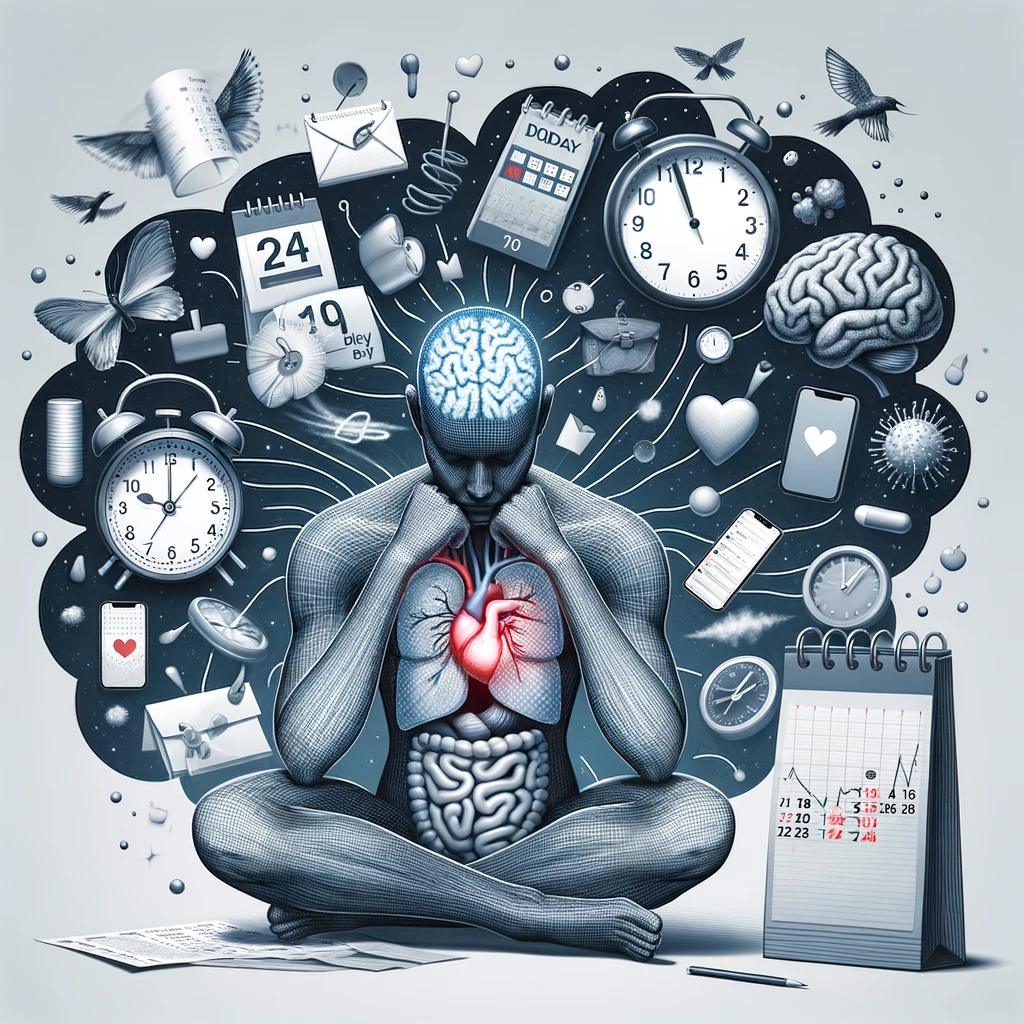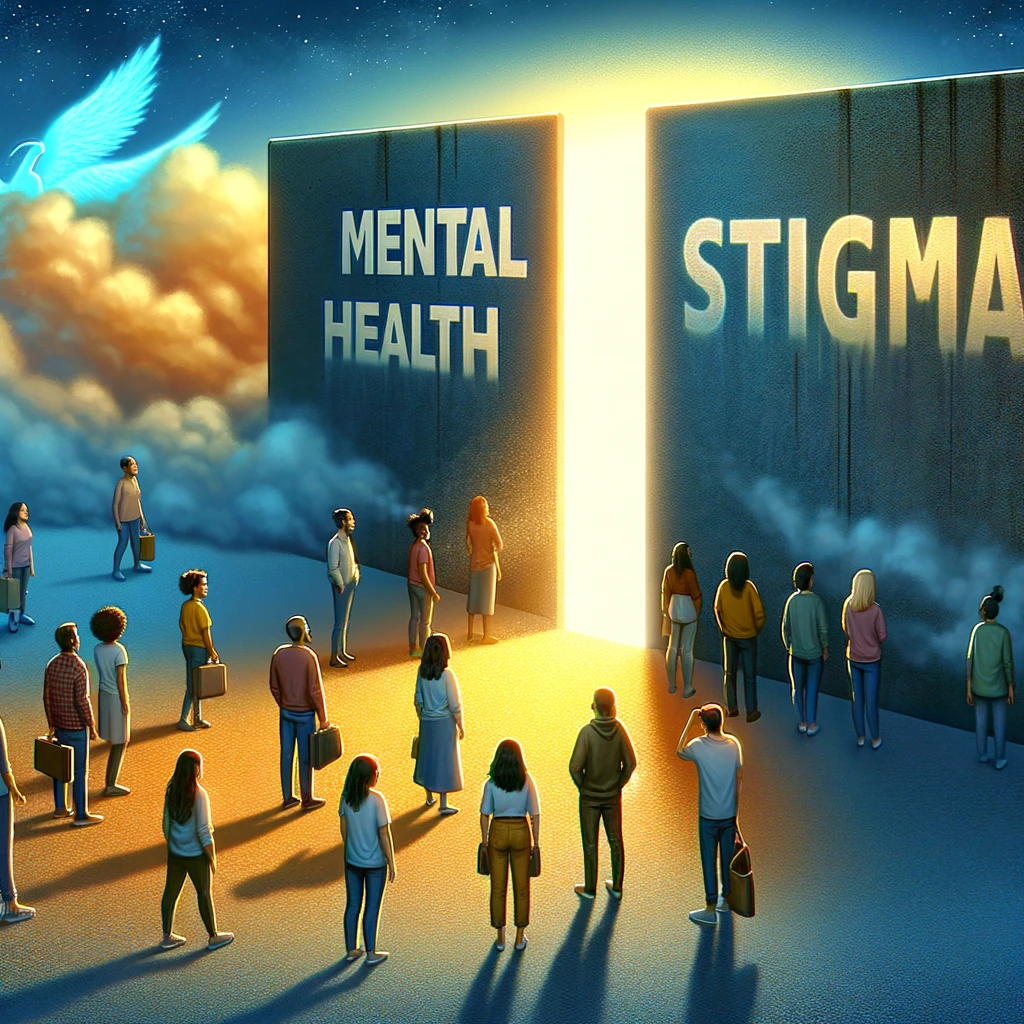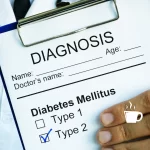Physical Address
304 North Cardinal St.
Dorchester Center, MA 02124

In recent years, the prevalence of anxiety disorders globally has taken the form of an epidemic, impacting millions of lives with its pervasive and often debilitating effects. As awareness grows, the need for understanding and addressing this mental health crisis has never been more urgent. Below are ten surprising facts about anxiety that shed light on its complexity, prevalence, and the critical need for comprehensive mental health strategies.

Anxiety disorders represent the most prevalent mental health challenge globally, affecting an estimated 284 million individuals. This makes anxiety the leading mental health issue, surpassing others in numbers and impacting people across all regions, cultures, and socioeconomic classes. Anxiety encompasses various conditions like generalized anxiety disorder (GAD), social anxiety, panic disorder, and phobias, each marked by excessive fear or worry impairing daily functioning.
The rise in anxiety disorders is attributed to factors like increased daily stress, economic instability, social isolation, and the digital media’s constant flow of distressing news. Modern lifestyles, characterized by decreased physical activity, poor dietary habits, and sleep disturbances, also contribute to increasing anxiety levels. The widespread nature of anxiety disorders places a significant burden on healthcare systems and has a considerable economic impact due to healthcare costs and lost productivity.
Addressing this epidemic requires a holistic approach that includes raising awareness, destigmatizing mental health issues, improving access to care, and integrating mental health services into primary healthcare. Effective public health policies and support systems can play a crucial role in reducing the prevalence of anxiety disorders and enhancing the mental well-being of populations worldwide.

While often perceived as a carefree period, childhood is increasingly affected by anxiety disorders, with about 7.1% of children aged 3-17 years (roughly 4.4 million) diagnosed with such conditions in the United States alone. This revelation challenges the common misconception that children are shielded from such mental health issues by their youth and lack of adult responsibilities. Anxiety in children can manifest in various forms, including separation anxiety, generalized anxiety, and phobias, significantly impacting their social development, academic performance, and overall well-being.
The reasons behind the rising incidence of anxiety in children are multifaceted, involving factors like family dynamics, academic pressures, social media exposure, and environmental stressors. These elements can overwhelm a child’s coping mechanisms, leading to heightened anxiety levels. Early signs of anxiety in children might include excessive worry about future events, avoidance of social situations, frequent physical complaints, and changes in sleep patterns.
Early intervention is crucial in helping children manage anxiety effectively. This can involve counseling, cognitive behavioral therapy, family therapy, and in some cases, medication. Schools and parents play a pivotal role in recognizing the signs of anxiety early and providing the necessary support to address these mental health challenges. By fostering an environment that encourages openness and understanding about mental health, society can better support its youngest members in navigating the complexities of growing up with anxiety.

Research highlights a notable genetic component to anxiety disorders, suggesting individuals with a family history of anxiety or other mental health conditions are at a heightened risk. This genetic predisposition does not guarantee the development of an anxiety disorder but indicates a higher susceptibility in some individuals. The role of genetics in anxiety is complex, involving multiple genes that may influence the brain’s chemical balance and how it processes emotions.
Environmental factors often interact with genetic predispositions to trigger anxiety disorders. Stressful life events, trauma, and chronic stress can activate underlying genetic vulnerabilities, leading to the manifestation of symptoms. This interplay between genetics and environment underscores the need for a nuanced understanding of anxiety disorders.
Recognizing the genetic aspects of anxiety can empower individuals and families to seek early intervention and support. It also highlights the importance of research into genetic markers and their potential role in developing targeted treatments. By understanding the genetic underpinnings of anxiety, healthcare professionals can tailor prevention strategies and interventions more effectively, offering hope for those at risk and paving the way for more personalized approaches to mental health care.

The economic impact of anxiety disorders is profound, costing the global economy billions of dollars annually. In the United States alone, the economic burden of these disorders exceeds $42 billion a year. This staggering figure encompasses direct costs such as healthcare expenditures for diagnosis, treatment, and management of anxiety disorders, including psychotherapy, medication, and hospitalization. Indirect costs include lost productivity due to absenteeism, decreased work performance, and the inability to maintain employment.
Anxiety disorders not only lead to significant healthcare expenses but also contribute to a decrease in quality of life, which can indirectly affect economic output. Individuals suffering from anxiety may find it challenging to complete their education, pursue career opportunities, or engage in social and economic activities, further exacerbating the economic toll.
The financial implications underscore the need for effective prevention and treatment strategies. Investing in mental health services, promoting early intervention, and improving access to care can mitigate the economic impact of anxiety disorders. Such investments not only enhance individual well-being but also yield economic benefits by reducing healthcare costs and increasing productivity. Addressing the economic burden of anxiety disorders requires a comprehensive approach that considers both the direct and indirect costs, emphasizing the importance of mental health in public policy and healthcare planning.

Anxiety disorders extend beyond psychological distress, posing significant risks to physical health. Chronic anxiety can lead to an array of physical complications, including heart disease, chronic respiratory disorders, and gastrointestinal conditions. The persistent state of heightened stress associated with anxiety triggers the body’s stress response system, releasing a flood of chemicals and hormones like adrenaline and cortisol. While beneficial in short bursts, prolonged exposure to these substances can wear down the body, leading to weakened immune function, increased blood pressure, and an elevated risk of heart disease.
Furthermore, anxiety can exacerbate respiratory conditions such as asthma or chronic obstructive pulmonary disease (COPD), as stress impacts breathing patterns and respiratory rates. Gastrointestinal problems, including irritable bowel syndrome (IBS), may also become more pronounced, as anxiety can affect the gut-brain axis, altering digestion and exacerbating symptoms.
Recognizing the physical health implications of anxiety underscores the importance of holistic treatment approaches that address both the mental and physical aspects of the disorder. It highlights the need for healthcare professionals to adopt a comprehensive perspective when treating individuals with anxiety, ensuring that both the psychological symptoms and the potential physical health complications are managed effectively. Integrating mental health care with primary health services can help in identifying and mitigating the physical health risks associated with anxiety, promoting overall well-being.

The advent of social media has dramatically reshaped the landscape of social interaction and communication, but it has also introduced new sources of anxiety. Particularly among teens and young adults, the pervasive use of social media platforms has been linked to increased feelings of anxiety, inadequacy, and depression. This phenomenon is largely attributed to the culture of comparison and the pursuit of validation that social media fosters. Users often compare their lives to the idealized images and narratives presented by others, leading to feelings of inadequacy and low self-esteem.
Moreover, the constant need for likes, comments, and shares as forms of social validation can exacerbate stress and anxiety levels, creating a cycle of dependency and comparison. The fear of missing out (FOMO) on events or interactions seen on social media can further intensify feelings of anxiety and isolation.
Addressing the negative impact of social media on anxiety requires a multifaceted approach. It involves promoting digital literacy and healthy social media habits, encouraging individuals to maintain a balanced perspective on what they see online. Educating users about the curated nature of social media content and fostering real-world connections and activities can mitigate the adverse effects of social media on mental health. Creating awareness about the potential psychological impacts of social media is crucial in developing strategies to support individuals in navigating these platforms healthily and positively.

Despite the high prevalence of anxiety disorders globally, a significant number of individuals suffering from these conditions do not seek or receive appropriate treatment. This gap in care is attributed to several factors, including the stigma surrounding mental health, limited access to mental health services, and a lack of awareness or understanding of anxiety disorders.
Stigma plays a crucial role in discouraging people from seeking help. Many fear judgment or discrimination from others, leading them to suffer in silence rather than reaching out for support. This issue is compounded by limited access to mental health services in many regions, where resources may be scarce, expensive, or difficult to navigate.
Additionally, a lack of awareness about the signs and symptoms of anxiety disorders can prevent individuals from recognizing their need for professional help. Some may downplay their symptoms as mere stress or worry, not realizing that their condition is treatable.
Addressing these barriers requires a concerted effort to destigmatize mental health issues, enhance public awareness about anxiety disorders, and improve access to mental health services. Public education campaigns can demystify mental health treatment and encourage individuals to seek support. Policymakers and healthcare providers must work together to expand access to affordable and effective mental health care, ensuring that those suffering from anxiety disorders receive the help they need to lead healthy, fulfilling lives.

Regular physical activity is a powerful tool in the fight against anxiety, serving as a natural and effective anxiety reducer. Exercise facilitates the release of endorphins, the body’s natural mood lifters, which play a critical role in reducing stress levels and improving emotional well-being. Beyond the biochemical effects, engaging in physical activity can enhance one’s sense of control and self-efficacy, providing a natural counterbalance to anxiety’s often debilitating impact.
The benefits of exercise extend to various forms of physical activity, including walking, running, yoga, and team sports, allowing individuals to choose activities that best fit their interests and lifestyles. Consistent exercise routines have been shown to decrease overall levels of tension, elevate and stabilize mood, improve sleep, and boost self-esteem. Even short bouts of physical activity can provide immediate relief from acute anxiety symptoms, making exercise a versatile and accessible treatment option.
Encouraging individuals with anxiety to incorporate regular exercise into their daily routines can serve as an adjunct to traditional treatments like therapy and medication. Healthcare professionals should advocate for exercise as part of a holistic treatment plan, emphasizing its dual benefits for both mental and physical health. As awareness of the mental health benefits of physical activity grows, it becomes a vital component in the broader strategy to combat the anxiety epidemic.

Anxiety disorders, despite their prevalence and impact, are among the most treatable mental health conditions. Effective treatment typically involves a combination of psychotherapy, medication, or both, tailored to the individual’s specific needs and symptoms. Cognitive-behavioral therapy (CBT) is one of the most effective forms of psychotherapy for anxiety, focusing on identifying, understanding, and changing thought and behavior patterns that contribute to anxiety symptoms. Through CBT, individuals learn coping strategies and skills to manage anxiety proactively.
Medications, including antidepressants and anti-anxiety drugs, can also play a critical role in treatment, helping to balance brain chemistry and alleviate symptoms. It’s important for individuals to work closely with their healthcare providers to find the most effective medication and dosage for their situation, as this can vary widely among individuals.
The high treatability of anxiety disorders underscores the importance of seeking help and the potential for recovery. With the right treatment approach, most people with anxiety can achieve significant improvement in their symptoms and quality of life. Encouraging open discussions about anxiety and its treatment can help reduce stigma and promote early intervention, leading to better outcomes for those affected. Awareness and education about the effectiveness of treatment are key to encouraging more individuals to seek the help they need.

Increasing awareness and education about anxiety disorders is crucial for fostering a society that is both understanding and supportive of mental health challenges. This commitment to knowledge and understanding acts as a key to unlocking a brighter future for individuals affected by anxiety, enabling them to access the support and care they need. By demystifying anxiety disorders and promoting open dialogue, we can reduce stigma, encourage individuals to seek help, and facilitate early intervention.
Educational initiatives can range from school-based programs to community workshops and online resources, all aimed at increasing understanding of anxiety’s nature, causes, and treatments. Such efforts contribute to a more informed public, capable of recognizing the signs of anxiety in themselves and others, and more importantly, knowing how to respond effectively.
This transformative approach to mental health awareness symbolizes hope and positive change, much like the image of a key made of puzzle pieces representing different facets of mental health awareness and education. Together, these pieces form a tool that can unlock the potential for improved mental health and well-being across society. This vision of a future where mental health is openly discussed and effectively supported is not only desirable but achievable through collective effort and dedication to education and awareness.
The “anxiety epidemic” is a call to action for individuals, healthcare professionals, and policymakers alike to prioritize mental health, foster understanding and support, and implement strategies to address this growing crisis. By shining a light on these surprising facts, we can start to unravel the complexities of anxiety disorders and work towards a future where mental well-being is within everyone’s reach.




